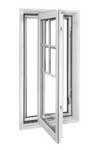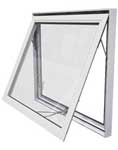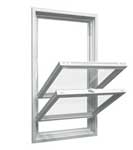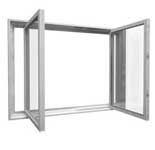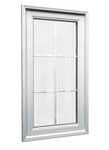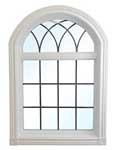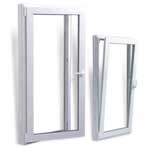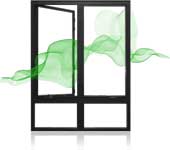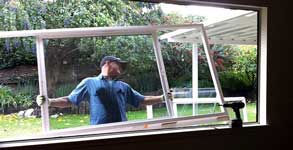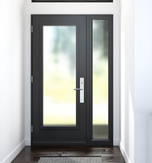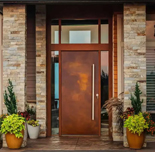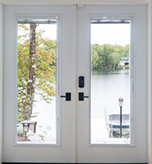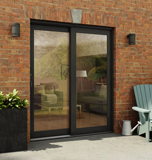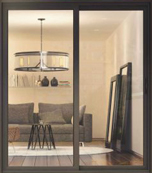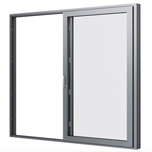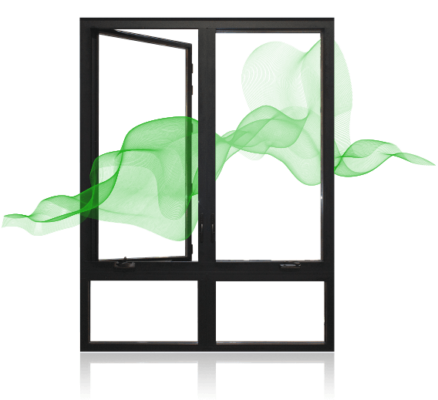For obvious reasons, most homeowners don’t feel that winter is the ideal season for window replacements. They think about cold air coming into their home and low temperatures negatively affecting the installation. Unfortunately, it sometimes is the earliest or only opportunity to observe issues with the performance of your windows. It could be an emergency, such as a broken window, cold drafts entering the house or moisture seeping in.
Just like the Canadian saying goes, “There is no bad weather, just insufficient clothing”, the same goes for winter window replacements. The highly experienced installers of Eco Choice Windows & Doors are experts in performing installations in any weather or season. They will perform any installation efficiently and professionally, doing it right the first time.
Read on to learn more about the benefits of replacing windows in winter and how we can help you with your project.
Window Replacement
Windows are responsible for about 40% of energy and heat loss in homes, making it all the more important to take good care of them and replace them when issues begin to show. Replacing old windows can dramatically improve the efficiency of your home. No matter if double- or triple-pane, new window units can prevent cold drafts from entering your home and ensure that the heat stays right where it should be: Inside. It also works the other way around during summer, where high-efficiency windows can help keep the heat outside and improve the comfort of your home.
Another benefit is that new windows will prevent moisture from entering your home. Over time, moisture exposure can lead to mildew and mould around the windows and even inside the walls. It is important to note that even if a visible mould patch may be small and not cause any health problems, it might be a sign of bigger issues. And if you or a loved one suffer from allergies or asthma, mould and mildew can have serious consequences.
There are more benefits to replacing your old windows. Depending on the kind of window you choose for the replacement, it can also help reduce noise and even increase the security of your home. Or if you are planning to sell your house, new, energy-efficient windows can boost the resale value as well. So replacing old, inefficient windows is an investment worth making.
Winter Window Replacement

While winter may seem like the wrong time to change your windows, it has several benefits worth exploring instead of pushing the renovation to spring. For one, winter is the best time
to check if your windows are still working correctly, as you normally cannot detect cold air entering your home during the warmer seasons. Also, windows collecting condensation and freezing regularly could be an indicator of a broken seal, a problem that likely can only be fixed with new windows. So if your main reason for looking at window replacements is to eliminate cold drafts or moisture coming into your home, winter is the perfect time to go ahead with the installation. A professional window replacement will seal off any leaks and improve the comfort of your home. Another benefit is that you might see significant savings on your utility bills as you will no longer battle with cold air.
You can even save time and money by scheduling your window replacement for the winter months! As the schedule usually is lighter, it gives more flexibility to install your new windows on a shorter timeline. Given that it is considered the “off-season”, there also might be other incentives to plan your renovation project during winter, as some manufacturers might be offering discounts on some of their products.
Some Precautions to take during a window installation in Winter
Installing one window at a time
Our installers will only replace one window at a time to keep the amount of cold air entering your home to a minimum and reduce energy consumption. Only once the installation is finished will they move on to the next window.
Sealing off rooms
One of the most important things during a winter installation is to reduce the impact of cold air entering your home. To contain the cold air, our experts will close the door to the room, limiting the airflow. If it is not possible to seal off a room, a temporary plastic wall will be installed to contain the opening. This will ensure that the rest of your home will stay warm, and you will not see a dramatic increase in your heating bill.
Covering the floor and furniture
To ensure that no snow, debris or dust will affect your flooring and furniture, installers will use drop cloths and floor runners to protect your property from damage. This is especially important during winter installations.
Cleaning up
The clean-up is just as important to our installers as the actual installation. This means that they will take all old windows and debris and properly dispose of them and clean up any dust or other dirt that occurred during the installation process.
While these additional steps will add some preparation and time to the installation, they are essential to minimize the disruption for our customers.
Are winter installations less effective?
Some homeowners show some skepticism concerning the efficiency of materials in cold temperatures, such as adhesives, foam insulation or caulking. There are different products available, some with higher efficiency in warm temperatures, while others are more effective in cold weather. Our installers ensure to bring the right materials for the temperature as you deserve the job to be done right the first time.
Does an installation during winter take more time?
While some of the steps, such as sealing off rooms, covering furniture and floors or only working on one window at a time, will add some time to the process, they are essentially done to minimize the impact of our work on the customer.
How cold is “too cold” to do an installation?
This depends on the situation. While our installers use material suited for effectiveness in cold temperatures, it can be dangerous to work in temperatures below -20 degrees Celsius. Heavy snow or rain and strong winds can also influence if an installation can be made.

